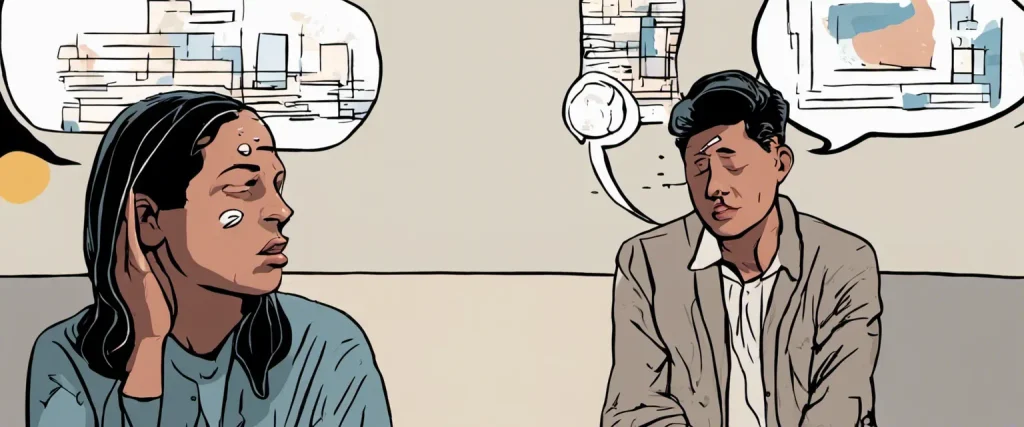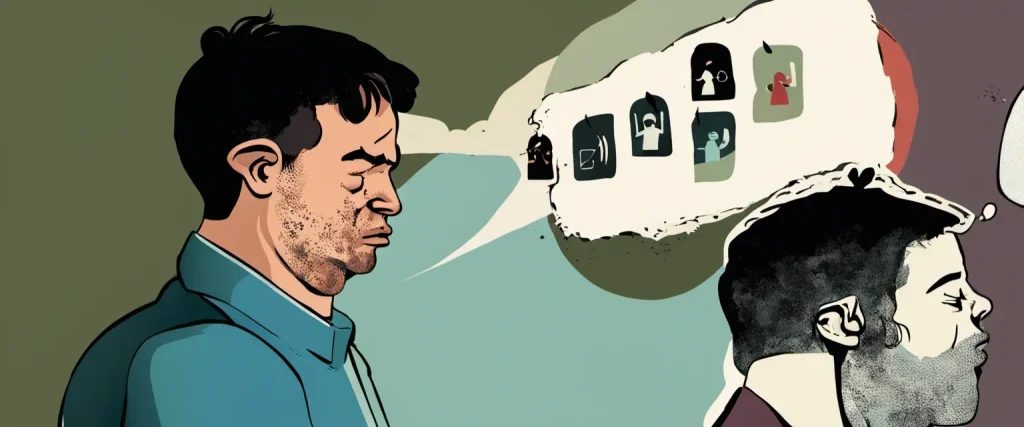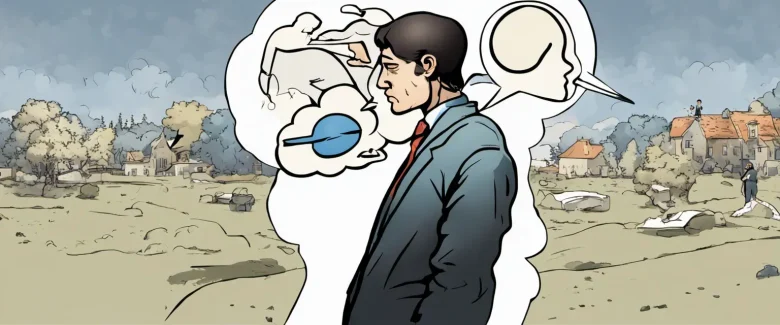In “The Reason I Jump,” Naoki Higashida offers readers a rare and enlightening glimpse into the mind of a person with autism. With remarkable insight and heartfelt honesty, Naoki shares his experiences, thoughts, and emotions that often remain misunderstood. This powerful memoir serves as a bridge between the neurotypical and autistic worlds, fostering empathy and understanding for individuals on the autism spectrum. Naoki Higashida, born in 1992 in Japan, was diagnosed with severe autism when he was five. Despite facing challenges with communication, he began to express himself through writing at a young age, ultimately creating this poignant book that continues to inspire and educate countless readers worldwide.
Chapter 1: Introduction
In Chapter 1 of “The Reason I Jump” by Naoki Higashida, the author introduces us to his unique perspective as a nonverbal individual with autism. Naoki mentions that although he cannot communicate with others through spoken language, he still possesses thoughts, feelings, and a desire to connect with people. He explains that this book is his attempt to bridge the gap between his inner world and the outside world.
Naoki then delves into the difficulties faced by people with autism, such as sensory hypersensitivity, distorted perception of time, and the challenges associated with self-expression. He shares that his mind and body can feel out of sync, and this can lead to behavior that may seem strange or even hurtful to others. Naoki explains that these behaviors are often a result of the intense frustrations caused by his limited ability to communicate effectively.
He also addresses the misconception that individuals with autism lack emotions. Naoki assures readers that he experiences a wide range of emotions, including happiness, sadness, and anger. However, due to his difficulty in expressing these emotions through words, he often resorts to physical actions or repetitive behaviors to cope.
Naoki concludes the chapter by expressing his desire for others to understand the invisible struggles faced by those with autism. Through this book, he hopes to shatter the stereotypes surrounding autism and provide insights into the minds of individuals like him. Ultimately, Naoki aims to create a world where communication barriers are broken, and people with autism are truly heard and understood.
Chapter 2: Understanding Autism
Chapter 2: Understanding Autism of the book “The Reason I Jump” by Naoki Higashida provides insights into the author’s experience with autism, while also trying to help neurotypical individuals better understand the condition.
Naoki begins by explaining that autism affects every individual differently, making it challenging to generalize the experiences and behaviors of autistic people. He stresses that the way information is perceived and processed by autistic individuals may be entirely different from neurotypical people. Naoki, therefore, asks people to be patient and open-minded when interacting with those on the autism spectrum.
Naoki then highlights the sensory sensitivity experienced by many autistics. He describes how everyday sounds, smells, and textures can be overwhelming or extremely painful for them. This heightened sensitivity often leads to a need for routine and predictability as a means of creating a sense of control and stability in their environment.
Furthermore, Naoki addresses the limitations of communication faced by those with autism. He acknowledges that some individuals may be nonverbal or struggle to express their thoughts and feelings in a conventional manner. However, this does not mean they lack intelligence or understanding. Naoki mentions that many autistics, like himself, rely on alternative forms of communication, such as writing or using assistive devices.
Naoki concludes the chapter by appealing to readers’ patience, understanding, and acceptance. He stresses the importance of looking beyond the challenging behaviors exhibited by those with autism and instead connecting with their thoughts and emotions. Naoki emphasizes that by empathizing with autistic individuals, we can bridge the communication gap and build meaningful relationships based on mutual respect and understanding.
Chapter 3: Sensory Experiences
Chapter 3 of “The Reason I Jump” by Naoki Higashida delves into the sensory experiences of individuals with autism. The chapter offers a unique insight into how autistic individuals perceive the world around them and explains some of the reasons behind their atypical behaviors.
Higashida begins by emphasizing that people with autism have heightened senses, often feeling overwhelmed by even the most ordinary stimuli. He describes how sounds can be unbearable, and the faintest noise can feel like a deafening roar. Faraway conversations become magnified and unbearable, causing a need to escape or shut down. Similarly, certain tastes and smells can be intensely distressing or even nauseating.
The author also explains sensory seeking behaviors, where autistic individuals actively seek out stimuli to regulate their sensory integration. They may flap their hands or rock their bodies to create a sense of balance and control. This need for sensory stimulation is not a simple desire for attention, but an essential coping mechanism.
Higashida also delves into the hypersensitivity experienced by small touches, explaining that even gentle brushes against the skin can feel painful. This hypersensitivity extends to the sense of touch in general, leading to difficulties in wearing certain fabrics or being hugged.
Overall, Chapter 3 provides a glimpse into the sensory experiences of autism, helping readers better understand the challenges faced by individuals with autism when it comes to perceiving and processing the world around them. Through this chapter, Naoki Higashida aims to enable greater empathy and acceptance for those with autism.
Chapter 4: Communication Difficulties

Chapter 4 of “The Reason I Jump” by Naoki Higashida is titled “Communication Difficulties.” In this chapter, Naoki provides insights into the challenges faced by individuals with autism when it comes to communicating with others.
Naoki explains that although people with autism yearn to communicate like everyone else, they often struggle with speech and find it hard to express their thoughts and emotions. He compares this struggle to being trapped inside a soundproofed room, where they can see and hear others but are unable to make themselves understood. This frustration sometimes leads to self-isolation, as communication becomes a daunting task.
To compensate for their speech difficulties, Naoki explains that many individuals with autism rely on alternative communication methods. For instance, they may use writing or typing to express themselves more effectively. However, even this alternative form of communication can be problematic as it requires intense concentration and often feels like a battle.
Naoki delves into sensory overload, explaining that individuals with autism often have heightened senses and are easily overwhelmed by sounds, lights, or touch. This sensory overload can make it even harder for them to focus on communication and exacerbates their difficulties in expressing themselves.
The author also addresses the misconception that nonverbal individuals with autism lack understanding. Naoki emphasizes that even if they are unable to verbalize their thoughts, they are still aware of their environment and comprehend what is happening around them.
Overall, Chapter 4 of “The Reason I Jump” sheds light on the immense challenges individuals with autism face in communicating with others. It emphasizes the importance of understanding and patience when interacting with those on the autism spectrum, and encourages readers to be open to alternative forms of communication in order to bridge the communication gap with individuals with autism.
Chapter 5: Social Interactions
Chapter 5 of “The Reason I Jump” by Naoki Higashida is titled “Social Interactions” and delves into the challenges faced by individuals with autism spectrum disorder (ASD) when it comes to engaging with others socially. Naoki provides insights into his own experiences and sheds light on why individuals with ASD may exhibit certain behaviors.
In this chapter, Naoki explains that individuals with ASD often struggle with nonverbal cues, such as facial expressions and body language. He shares that while he may appear uninterested or even rude in social interactions, it is due to his difficulty in understanding these nonverbal cues. Furthermore, he emphasizes that the inability to read these cues causes intense anxiety and confusion.
Naoki also describes the importance of routine and predictability for individuals with ASD. He highlights that sudden changes in plans or unexpected events can be overwhelming as they disrupt their carefully structured world. Naoki writes that maintaining a set routine provides a sense of stability and comfort, helping individuals with ASD navigate social interactions more confidently.
Additionally, Naoki discusses the impact of sensory sensitivity on social engagements. Individuals with ASD can experience extreme sensitivity to bright lights, loud noises, or even certain textures. This hypersensitivity can make everyday social situations overwhelming and unbearable for them.
Through his narrative, Naoki emphasizes the need for empathy and understanding from others towards individuals with ASD. He urges people to be patient, offer them support, and respect their individuality.
In summary, Chapter 5 of “The Reason I Jump” provides valuable insights into the challenges faced by individuals with ASD during social interactions. Naoki’s firsthand experiences shed light on the difficulties of understanding nonverbal cues, the significance of routines, and the impact of sensory sensitivity. This chapter serves as a way to promote empathy and understanding towards those with ASD, urging society to approach social interactions with patience and acceptance.
Chapter 6: Repetitive Behaviors
Chapter 6 of “The Reason I Jump” by Naoki Higashida explores the topic of repetitive behaviors often exhibited by individuals with autism spectrum disorder (ASD). Naoki, a 13-year-old boy with nonverbal autism, sheds light on the reasons behind these actions, offering insight into an aspect of autism that is often misunderstood.
Naoki begins by explaining that repetitive behaviors provide a sense of calmness and stability for people with ASD, as they struggle to navigate the chaotic and overwhelming world around them. These actions, such as jumping, flapping, or spinning objects, help individuals create order in their minds and maintain a sense of control over their environment.
He further discusses how sensory issues play a significant role in the manifestation of repetitive behaviors. People with autism often experience heightened sensitivity to certain sounds, textures, or lights. Engaging in repetitive actions may help them block out overwhelming sensory stimuli or provide a way to stimulate their senses in a predictable and controllable manner.
Naoki addresses the frustrations and challenges individuals with autism face when their repetitive behaviors are misunderstood or deemed “odd” by others. Society’s inability to comprehend the underlying reasons for these actions leads to isolation and exclusion, exacerbating the social struggles faced by people with autism.
The chapter also emphasizes the importance of being empathetic and understanding towards individuals with ASD, as repetitive behaviors serve as coping mechanisms rather than mere quirks. Naoki urges readers to approach those with autism with acceptance and to strive for a world where all forms of communication, including repetitive actions, are respected and understood.
Overall, Chapter 6 serves as a vital tool in breaking down the stigma and misconceptions surrounding repetitive behaviors in individuals with autism, advocating for greater empathy and awareness in our understanding of this complex disorder.
Chapter 7: Coping Strategies
Chapter 7 of the book “The Reason I Jump” by Naoki Higashida is titled “Coping Strategies.” In this chapter, Naoki shares his personal experiences and insights into the ways he copes with his autism.
Naoki begins by explaining that one of the most challenging aspects of autism is how overwhelming everyday sensory experiences can be. He expresses his difficulty in handling loud noises, bright lights, strong smells, and the sensation of touch. These sensory sensitivities often lead to meltdowns or shutdowns, which can be misunderstood by others as tantrums or withdrawal. Naoki emphasizes that it is vital for people to understand that these reactions are not intentional but rather a result of feeling overwhelmed by sensory stimuli.
To cope with these sensory challenges, Naoki describes several strategies he employs. He mentions that he instinctively uses repetitive actions or movements, such as spinning objects, rocking his body, or flapping his hands, to calm himself down. These actions are known as stimming, and they provide individuals with autism a way to regulate their sensory input and release anxiety.
Naoki also shares how creating routines and following predictable schedules help him feel more secure and in control. He explains how changes or unexpected events disrupt his sense of order, causing confusion and distress. By adhering to familiar routines, he is better able to manage his anxiety and navigate through daily activities.
In addition to these coping strategies, Naoki discusses the crucial role of patience and understanding from others. He highlights the importance of empathy and encourages people to try and put themselves in the shoes of someone with autism, understanding that their actions are not deliberate but a response to their unique sensory experiences.
Overall, in Chapter 7 of “The Reason I Jump,” Naoki Higashida provides valuable insights into the coping strategies he employs to navigate the challenges of autism, such as stimming, maintaining routines, and seeking understanding from others.

Chapter 8: Hope for the Future
Chapter 8: Hope for the Future of “The Reason I Jump” by Naoki Higashida explores the author’s perspective on the possibilities and hopes he has for his future as a nonverbal person with autism. In this chapter, Naoki provides insights into his experiences, challenges, and desires.
Naoki starts by acknowledging the significant difficulties faced by those with autism in society. He highlights the misunderstandings, isolation, and the limitations that society imposes on people like him. However, Naoki maintains optimism and emphasizes the importance of fostering understanding and empathy from others.
He expresses his longing for communication and connection, explaining the frustration he feels due to his inability to convey his thoughts and feelings effectively. Naoki yearns for improvement in his speech and language abilities, hoping for a future where he can express himself without limitations. He believes that with the right support and opportunities, individuals with autism can develop their potential and contribute meaningfully to the world.
Naoki also stresses the role of technology in aiding communication and bridging the gap between autistic individuals and neurotypical people. He shares his belief that technological advancements can empower those with autism to express themselves more freely, thereby enabling greater understanding and integration within society.
Furthermore, Naoki discusses the importance of supportive environments and inclusive education for individuals with autism. He advocates for creating a world where individuals with autism are not stigmatized or excluded but are provided with the necessary resources and accommodations to navigate the challenges they face.
In conclusion, Chapter 8 of “The Reason I Jump” reflects Naoki Higashida’s outlook on the future as an autistic person. Despite the obstacles, he maintains an enduring hope for societal understanding, improved communication abilities, and a world where individuals with autism can thrive and fulfill their true potential.
After Reading
In conclusion, “The Reason I Jump” by Naoki Higashida sheds light on the unique experiences and perspectives of someone on the autism spectrum. Through his insightful and honest responses to various questions, Higashida offers readers a deeper understanding of his condition and challenges commonly held assumptions about autism. With empathy and compassion, Higashida encourages us to appreciate the complexities of neurodiversity and embrace the importance of inclusivity and understanding in our society. This heartfelt and enlightening account serves as a valuable resource for individuals seeking to connect with and better comprehend the inner world of those with autism.
1. Waking the Tiger: Healing Trauma” by Peter A. Levine
If you found “The Reason I Jump” insightful and are interested in further exploring trauma and its effects, “Waking the Tiger” is a fantastic choice. Levine delves into the impact of trauma on the body and mind, offering practical tools for healing and recovery. His compassionate approach and unique insights make this book an invaluable resource.
2. The Neurotic Personality of Our Time” by Karen Horney
Karen Horney’s classic work provides a deep analysis of the human psyche and the development of neurotic behavior. Building on the themes of understanding oneself and others explored in “The Reason I Jump,” Horney offers a psychological framework that explores the origins and manifestations of neuroticism in our society. Her exploration of interpersonal dynamics and the search for self-understanding make this an enlightening read.
3. WHAT HAPPENED TO YOU? Conversations on Trauma, Resilience, and Healing” by Bruce D. Perry and Oprah Winfrey
This powerful collaboration between trauma expert Bruce D. Perry and media mogul Oprah Winfrey delves into the effects of trauma and provides insights into resilience and healing. Inspired by Naoki Hishida’s book, WHAT HAPPENED TO YOU?” explores the intersection of psychology, neurobiology, and personal growth, offering real-life stories and practical strategies for compassionately addressing trauma in ourselves and others.
4. The Body Keeps the Score: Brain, Mind, and Body in the Healing of Trauma” by Bessel van der Kolk, M.D.
If you found “The Reason I Jump” enlightening in terms of understanding neurodiversity and the experiences of those with autism, “The Body Keeps the Score” offers deep insights into the impact of trauma on the body and brain. Dr. Bessel van der Kolk explores innovative therapeutic approaches and offers hope for healing from the effects of trauma while broadening our understanding of the brain’s potential for recovery.
5. “Resilient: How to Grow an Unshakable Core of Calm, Strength and Happiness” by Rick Hanson, Ph.D., and Forrest Hanson
“Resilient” provides a roadmap for building emotional resilience, cultivating inner strength, and finding happiness in the face of adversity. This book complements the themes in “The Reason I Jump” by offering practical strategies and evidence-based insights to support personal growth and resilience. With engaging stories and actionable exercises, this book empowers readers to navigate life’s challenges with grace and fortitude.



